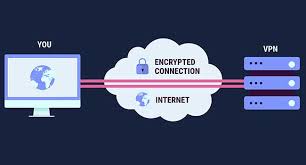Even though the Internet is a young technology, it's hard to imagine life without it!!. But what makes it work?
To understand the Internet, look at it as a system with 2 main components. The first of those components is hardware (includes everything from the cables that carry terabits of information every second ).
Hardware that support the Internet include routers, servers,, satellites, and other devices. All these devices together create the network of networks. The Internet is a malleable system Some of those elements may stay fairly static and make up the backbone of the Internet. Others are more peripheral.
Machines that store the information we see on the Internet are servers. Other elements are nodes(serve as a connecting point along a route of traffic). And then there are the transmission lines which can be physical, as in the case of cables and fiber optics.
All of this hardware wouldn't create a network without the second component of the Internet: the protocols. Protocols are the sets of rules that machines follow to complete tasks. Without a common set of protocols that all machine connected to the Internet must follow, communication between devices couldn't happen.
HOW Information/Data Travels Across The Internet
Have you heard of several protocols on the Internet?. For example, hypertext transfer protocol is what we use to view Web sites through a browser ( that's the http at the front of any Web address stands for). If you've ever used an FTP server, you have relied on the file transfer protocol. Protocols like these and dozens more create the framework within which all devices must operate to be part of the Internet.
Two Important Protocols
Transmission control protocol (TCP) and the Internet protocol (IP).
What do these protocols do? At their most basic level, these protocols establish the rules for how information passes via Internet. Without these rules, you would need direct connections to other computers to access the information they hold.
You've probably heard of IP addresses. Each device connected to the Internet has an IP address. This is how one machine can find another through the immense network.
The version of IP most of us use today is IPv4, based on a 32-bit address system. There's one big problem with this system: We're running out of addresses.
When you want to send a message or retrieve information from another computer, the TCP/IP protocols make the transmission possible. Your request goes out over the network, hitting domain name servers (DNS) along the way to find the target server. Once the target server receives the request, it can send a response back to your computer. The data might travel a completely different path to get back to you.
Let's Have A Closer Look At How Information Travels Across The Internet.
In order to retrieve this article, your computer had to connect with the Web server containing the article's file. And i'll be using that as an example of how data travels across the Internet.
First, you open your Web browser and connect to my Web site. When you do this, your computer sends an request over your Internet connection to your Internet service provider (ISP). The ISP routes the request to a server further up the chain on the Internet. Eventually, the request will hit a domain name server (DNS).
The request will eventually come to Web server.The server will respond by sending the requested file in a series of packets. Packets have headers and footers that tell computers what's in the packet and how the information fits with other packets to create an entire file.
That's an important feature as packets can travel multiple paths to get to their destination, it's possible for information to route around congested areas on the Internet. In fact, as long as some connections remain, entire sections of the Internet could go down and information could still travel from one section to another.
When the packets get to you, your device arranges them according to the rules of the protocols. The end result is, you see this article.
That's how the Internet works. As you look closer at the various devices and protocols, you'll notice that the picture is far more complex than the overview i have given.





Comments
Post a Comment